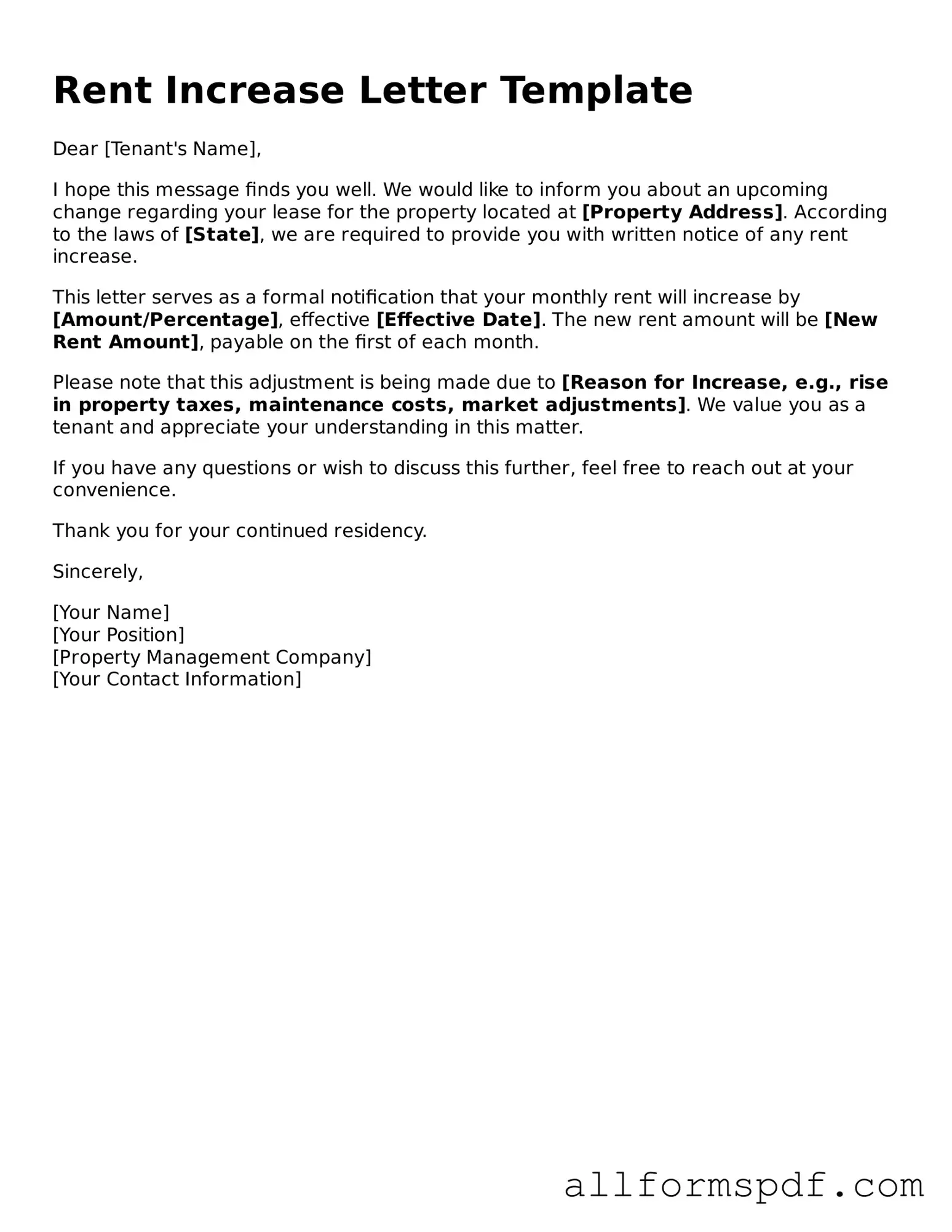Rent Increase Letter - Usage Guidelines
Once you have gathered all necessary information, you are ready to fill out the Rent Increase Letter form. This document will help communicate the new rent amount and any relevant details to your tenant. Following the steps below will ensure that the form is completed accurately and professionally.
- Begin with your contact information: At the top of the form, write your name, address, phone number, and email address. This allows the tenant to reach you easily if they have questions.
- Include the date: Write the date on which you are sending the letter. This is important for record-keeping and for the tenant to understand when the notice was issued.
- Add the tenant's information: Below your contact details, include the tenant’s name and their address. Make sure to spell everything correctly to avoid confusion.
- State the purpose of the letter: Clearly indicate that this is a notice of rent increase. You can use a simple statement like “Notice of Rent Increase” as a heading.
- Specify the current rent: Mention the current rent amount that the tenant is paying. This provides context for the increase.
- Detail the new rent amount: Clearly state the new rent amount that will take effect. Be specific about the increase to avoid any misunderstandings.
- Provide the effective date: Indicate when the new rent will start. This is typically at the beginning of the next rental period.
- Include any additional information: If there are reasons for the increase, such as improvements or market adjustments, briefly mention them here.
- Close with your signature: Sign the letter at the bottom. This adds a personal touch and confirms that you are the one issuing the notice.
After completing the form, review it for any errors. Once satisfied, deliver the letter to your tenant according to your lease agreement's requirements. This may involve mailing it, delivering it in person, or sending it electronically, depending on what is permitted.
